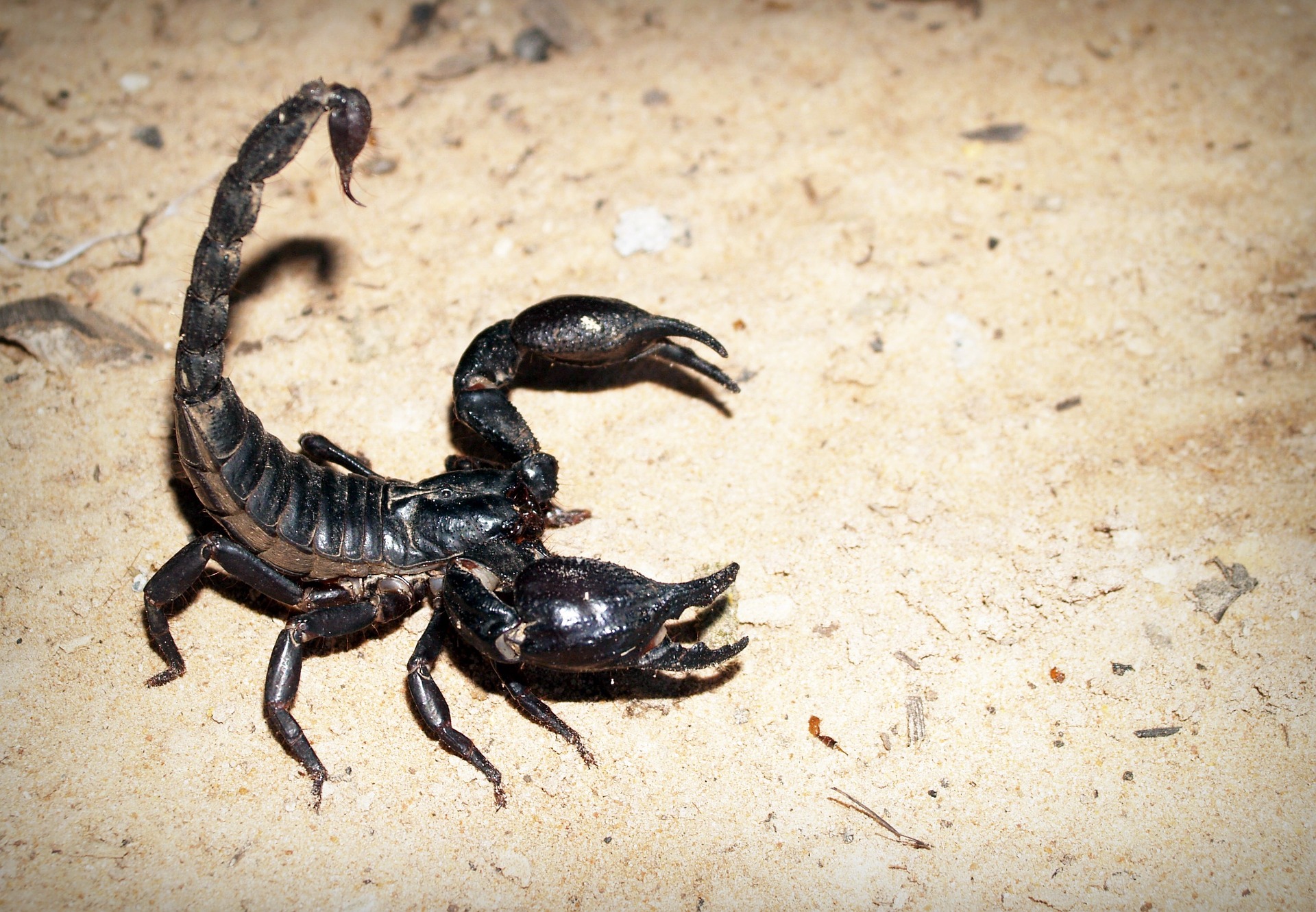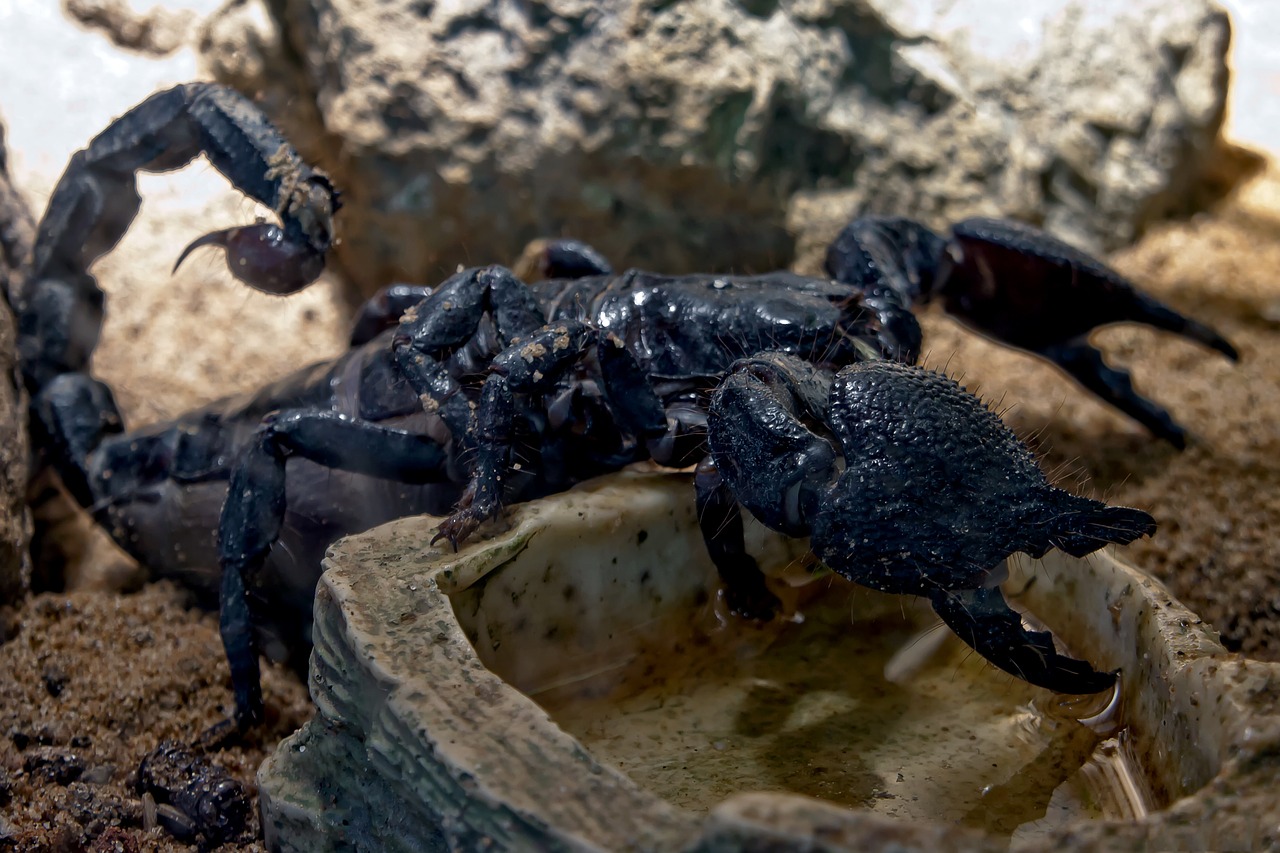
Ready to take home a new scorpion pet? Don’t be too nervous. Scorpions are fairly easy to care for. The first thing to know before ever buying a scorpion, though, is that they are not pets to be handled. You should not hold your scorpion, and you shouldn’t expect it to interact with you.
It is a great pet for someone who likes to observe, though. And they make pretty cool night time entertainment when you shine a black light on them.
There are two primary types of scorpions, jungle scorpions and desert scorpions, and each one has slightly different needs. Here’s exactly what you need in order to take your scorpion home.
What a scorpion habitat requires
Scorpions don’t require a huge amount of space. A ten gallon terrarium should do it. They are fairly small after all, and prefer to spend much of their time burrowed in substrate. You should be aware, however, that these arachnids can squeeze through tiny spaces, climb walls, and lift lids. In other words, your scorpion habitat needs to be secure.
Scorpions are generally safe to keep in groups, but it is possible for a member of the group to be bullied or eaten. If you’re going to keep more than two scorpions, you’ll need a slightly larger terrarium.
Unlike many exotic pets, scorpions do not require UV lighting, but it’s a good idea to put a heat pad under one side of the tank to provide temperature variation. This allows your pet to select the area where the temperature is most comfortable, as well as helping them to regulate their body temperature. Scorpions are most comfortable in an environment around 75 to 90 degrees F. That goes for both desert and jungle species.
The big difference between the two types of scorpions is their substrate requirements. Jungle scorpions require damp substrate and more humidity in their tank (about 80 percent humidity). A glass terrarium makes it easy to maintain the right humidity levels. And peat moss or potting soil are recommended substrates.
Desert scorpions, on the other hand, are fine with dry play sand. For either type of scorpion, you should provide a hide area (or multiple hides if you have multiple scorpions in a habitat).
Feeding and other scorpion supplies
All scorpions need some water. Jungle species should get a water dish, preferably one that’s heavy enough to avoid spilling. For desert species, a moist sponge is really all they need. It’s unlikely that you’ll see your scorpion drinking often, but you should still always keep water available.

Other than that, you’ll need to feed live crickets to your scorpion once or twice a week. Other food options include mealworms and other small insects or grubs. Scorpions require minimal maintenance, and their food does not have to be dusted with calcium, unlike many reptiles and amphibians.
Remember, scorpions are not pets to be handled. But they can be a lot of fun to watch burrowing and moving around at night. Take a look at the scorpions we have at The Tye-Dyed Iguana.
